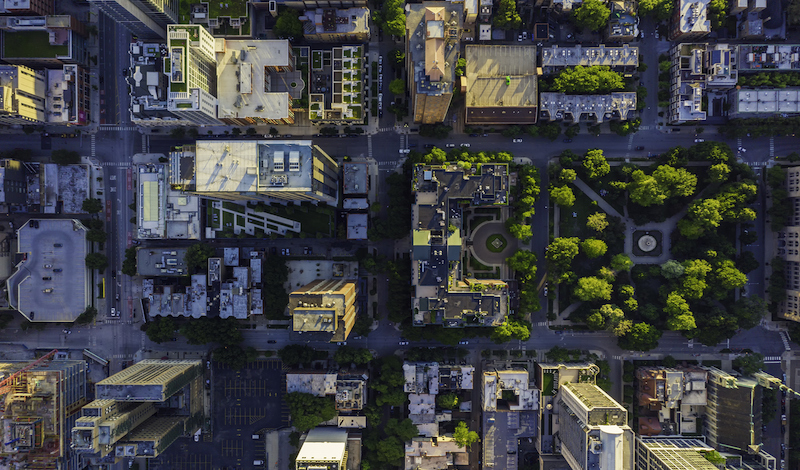
Policymakers must address how local governments have created segregation through their policy choices.
The quality of life that people experience in the United States depends largely on the neighborhood in which they reside. A place is segregated when people with low incomes and people of color are concentrated in residential locations apart from wealthy and white residents. Segregation permits unequal access to public goods and services.
But the extent of segregation varies from place to place, and segregation has changed dramatically over time. Although people of color and people with low incomes used to be isolated on separate blocks or separate neighborhoods, now they are isolated in separate cities.
Conventional wisdom explains that segregation along race and class lines results primarily from two causal factors: racial antipathy or economic inequality. Both explanations rely on individual choices made by residents in their search for housing. These explanations ignore the underlying set of choices that generate housing options in the first place.
Local land use regulations create local housing geography. Property owners and those who derive their livelihood from property seek to protect and enhance property values and to control the quality of municipal services—particularly schools. By invoking their powers over land use and service provision, local governments affect the aggregate demographic makeup of communities and the spatial distribution of residents and services, thereby generating and enforcing segregation.
For more than 100 years, local policies have insulated the neighborhoods of white property owners, resulting in segregation along race and class lines. Not only do local politics drive segregation, but also battles over control of urban space have been the primary driver of city politics. Both the quality of life accessible to residents and the markets available to commercial interests are at stake.
Historically, private actions such as vigilante activity, restrictive covenants, and racial steering resulted in race and class segregation. As working-class black migrants and foreign immigrants poured into cities to take advantage of industrialization and cities became modern service providers, white homeowner neighborhoods faced threats of encroachment. Maintaining exclusivity required coordination and constant vigilance against potential violators.
Americans—particularly white Americans—have long had a racist, classist understanding of how to value property and who deserves public benefits. Developers and property owners marshalled the power of municipal governments to restrict land use with the promise of protected investments and exclusive access to local public goods.
Several southern cities established separate Black and white neighborhoods in the early 1900s using zoning. The U.S. Supreme Court ruled racial zoning unconstitutional in 1917. But even without designating specific areas to be inhabited by different demographics, cities can—and do—generate segregation using land use regulations. Policies such as minimum lot sizes, restrictions on density and multi-family housing, limitations on subsidized housing, growth controls, open space preservation requirements, high fees, and cumbersome review processes all codify earlier patterns of racial and economic segregation while the nation diversifies and inequality worsens.
Political geography comprises nested units: neighborhoods within wards, wards within cities, cities within states, and states within the nation. When residential segregation maps onto political geography, political divisions fuse with race and class divisions. As a result, segregation generates inequalities among groups based on race and class because, in a world of scarce resources, the politically powerful deny public goods to those who are politically weak. Due to segregation, the benefits experienced by racial and ethnic minorities and low-income individuals are inferior to the benefits experienced by whites and the wealthy. Where segregation persists, vast inequalities remain in resources ranging from schools to safe streets to drinking water.
The situation is not immutable. But it is difficult to address. The first step toward a solution is to understand that segregation is purposeful. The geography of segregated communities did not happen by accident. And the people who create segregation, maintain segregation, and benefit from segregation are always those most opposed to undoing it.
Still, it is possible to undo segregation. Two of the most important policy levers are integrating U.S. housing stock and preventing exclusive neighborhoods and cities from remaining off-limits to lower-income families. Lower-income residents can also benefit from receiving housing subsidies that allow them to move and make choices. At the same time, policymakers must be careful not to push new housing into marginalized neighborhoods that have few options at the lower end of the income distribution.
If breaching segregation proves unworkable, state governments can do more to spread and redistribute public goods, just as many states have accomplished for school funding.
Garnering state support for either desegregation or redistribution of public goods will require tremendous political pressure from marginalized groups and their allies—an admittedly daunting task. But these groups may find support from businesses and residents who have been priced out of unaffordable markets.
Advocacy groups, citizens’ organizations, and concerned policymakers must build a coalition to work for a more just and equitable desegregated society. America’s future depends on their success.




